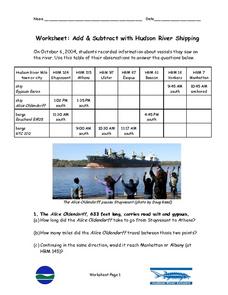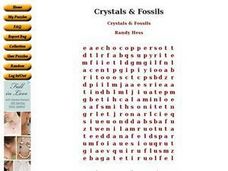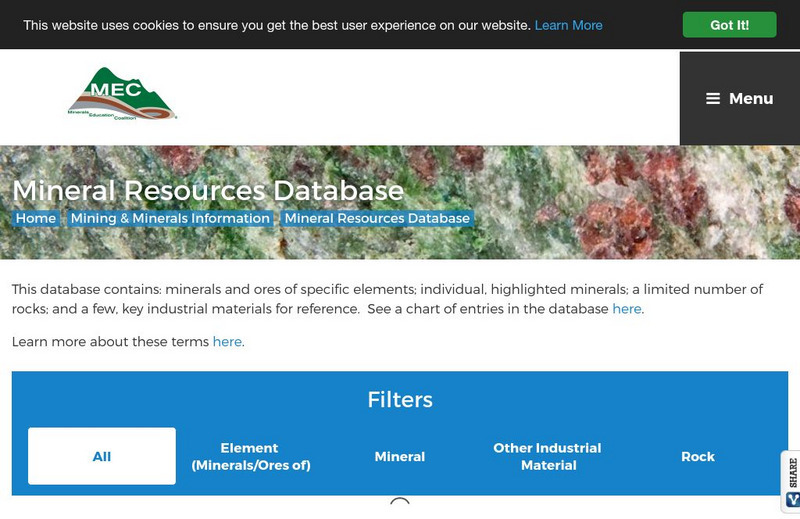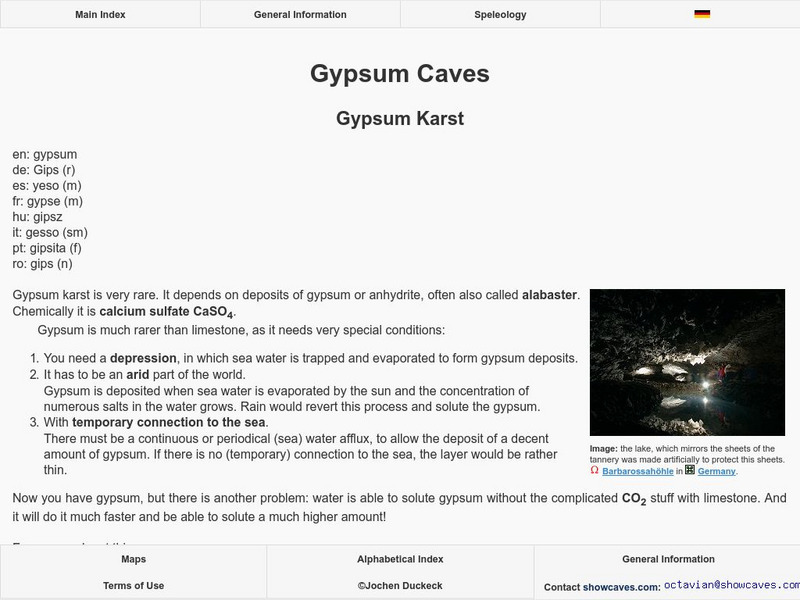Curated OER
Exothermic Rehydration of Gypsum
Learners observe exothermic reactions in the lab using plaster. In this chemistry lesson, students collect data from their experimental set up every five minutes. They explain the different stages in the hardening of plaster.
Curated OER
Add & Subtract with Hudson River Shipping
In this shipping on the Hudson River worksheet, students record information about types of vessels seen on the Hudson River and respond to the questions that follow about each. Then they identify the Alice Oldendorff which carries road...
Curated OER
Doing Math with Hudson River Shipping
In this Hudson River shipping worksheet, students record information about various vessels seen on the Hudson River and respond to the questions that follow. They determine how many miles the Gypsum Baron traveled from one place to...
Curated OER
Fossil Impressions of Ancient Life
Learners make a mold using Plaster of Paris and then make a cast using that same mold. They pick a fossil and describe how it looks. They write a fictionalized story about its life, or burial. (
Curated OER
Hot Rocks
Students demonstrate that setting of plaster and cement is a change, which involves a release of heat energy, use data collected experimentally to construct comparison graphs and analyze the graphs to make predictions about future...
Curated OER
Crystals & Fossils
In this earth science worksheet, students identify and locate vocabulary terms related to crystals and fossils. There are 32 words located in the puzzle.
Curated OER
Cavern Geology: Speleothem Construction
Students discover how underground rock formations grow. They perform various activities based on grade level.
University of Oregon
Museum of Natural and Cultural History: Rocks and Minerals: Everyday Uses
Click on the shelves in this virtual exhibition to learn about the many rocks and minerals that we use in our everyday lives.
Other
Scienceviews.com: Minerals and Their Uses
Every segment of society uses minerals and mineral resources everyday. The roads we ride or drive on and the buildings we live learn and work in all contain minerals. Below is a selected list of commonly used metallic and nonmetallic...
Other
Minerals Education Coalition: Minerals Database
This resource provides photographs of and information about various minerals.
Other
Speleology: Gypsum Caves
An explanation of how Gypsum Caves form and where they are located. A picture of the Bararossahohle cave in Germany.
Utah State Office of Education
Utah State Office of Education: Identifying and Classifying Minerals
This thorough Utah State Office of Education site explains the criteria for identifying minerals and provides pictures of various minerals.
Other
The Happy Scientist: Minerals
Overview of minerals with definitions, how to identify them, what they are used for, and crystals.
Wikimedia
Wikipedia: Paris, Ontario
Paris Ontario is located on the Grand River in Ontario and was first settled in 1829. It was named for local gypsum deposits that were used to make plaster of Paris. Home to many famous Canadians it has also been featured in numerous...
The Franklin Institute
Franklin Institute: How Sedimentary Rock Is Formed
The Franklin Institute describes the way sedimentary rock is formed, with links to descriptions of several types of sedimentary rocks.















